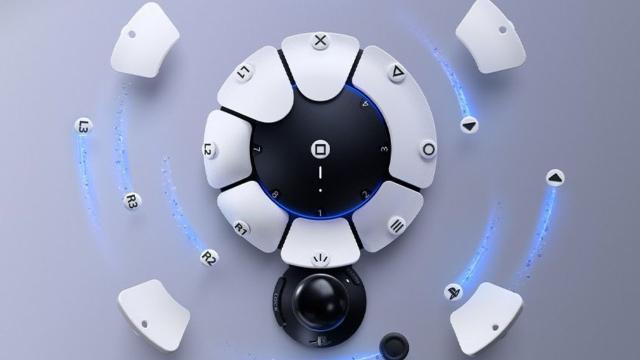The launch of the PlayStation Access controller is now less than a month away, which means it’s time for Sony to start demonstrating exactly how its latest device works. That facet of the marketing campaign has officially begun, with a new video blog explaining how to unbox the controller and set it up.
The PlayStation Access controller is designed for people with disabilities and those that do not have a full range of motion in their hands — basically anyone who might have physical difficulty manipulating the PS5’s standard DualSense controller. Let’s walk through the video step-by-step.
Though it looks very different, the PlayStation Access controller bears a great many similarities to the Xbox Adaptive Controller released in 2019. Indeed the unboxing process is quite similar, with a pair of large loops attached to the box that will allow ease of access to its contents.
The controller itself, as we’ve seen in early promotional images, is arranged in a kind of ‘flower’ shape. Sony describes the control stick as a ‘dome’ stick, and refers to the eight large tabs that form the ‘flower’ shape as ‘pillow buttons’. The X button sits at the centre of the pillow buttons, while the O and Options buttons sit on the pillow buttons marked 5 and 7. A pouch within the box contains a number of caps and pillow buttons in different sizes so you can customise the controller’s face to your specific needs and comfort levels. Each pillow button has a small hole into which press-on labels for the other face buttons can be inserted.
The Access Controller connects to your PS5 via USB-C, and Sony recommends doing this before you turn it on and start rebinding any controls. If you’re setting up a brand new PS5, Sony says to ensure you set up a DualSense controller first before setting up the Access Controller.
These are already awkward steps — the whole point of the Access Controller is to make life easier for people who can’t use the DualSense, and yet it seems like you can’t get the Access Controller running without one. Plugging the USB-C into both the controller and the console also requires a certain level of dexterity. For some disabled users, these two steps combined could make it necessary to have someone on hand to help complete the setup, which is a bit of a bummer. They feel like steps might have been designed with the assumption of someone to assist nearby, but the presence of assistance isn’t always guaranteed (or required). Hopefully, Sony will be able to fix this with future software updates, because autonomy is every bit as important as ease of use.
Once your Access Controller is connected via the USB-C, your PS5 will walk you through the setup phase. You can set your system up to recognise one of several controller setups — a single Access Controller, a pair of Access controllers, or an Access Controller with a DualSense. This will also be the point where any external devices like sticks, buttons, switches or levers, you can connect them to the rear side of the Access Controller. You’ll also be asked to place the controller in one of several 90-degree orientations, depending on which is most comfortable for you to grip or rest your hand on.
Finally, it’s time to bind your controls. You will know what works best for you.
All these settings are then compiled into a profile you can access at any time, so don’t worry if your Access Controller needs to serve multiple people. Once a layout profile has been create for each user, you can quickly hop between them when needed.
We’re hoping to get our hands on the PlayStation Access controller IRL in the relatively near future, and we’ll bring you preview coverage on it when we’re able.
Are you a disabled gamer interested in the Access controller? Email me! I’d love to hear your thoughts on it.
You can find out more about the controller here.

Leave a Reply